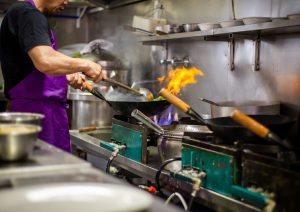Food Photography Portfolio: Building Professional Credentials in Culinary Image Creation
If you’re looking to elevate your career as a food photographer, building a professional portfolio is essential. As culinary image creation is becoming a niche in the photography market, having a strong portfolio showcasing your skills and expertise is crucial. In today’s digital age, where everyone is putting their best foot forward on social media, having an impressive food photography portfolio can make all the difference. In this article, we’ll discuss everything you need to know about building a professional portfolio in culinary image creation and how it can help you advance in your career.
The Importance of a Food Photography Portfolio
A portfolio is a collection of work that represents your skills, experience and expertise in a specific field. In the case of food photography, a portfolio is a visual representation of your ability to capture the beauty, taste and essence of different food items in a creative and aesthetically pleasing manner. It is a piece of material that showcases your work to potential clients, employers, and collaborators. A strong and well-rounded portfolio is crucial in attracting new projects, building credibility, and gaining recognition in the industry.
What Makes a Good Food Photography Portfolio?
While there is no one-size-fits-all formula for creating a perfect portfolio, there are a few essential elements that make a food photography portfolio stand out. Here are some key points to keep in mind while building your portfolio:
Demonstrate Technical Skills
A good food photography portfolio should demonstrate your technical skills and knowledge of photography. It should showcase your ability to handle lighting, angles, compositions, and camera settings to capture enticing food images. The portfolio should also reflect your proficiency in using photo editing software to enhance and edit the images further.
Variety is Key
Incorporating a variety of images in your portfolio is vital. This includes showcasing different types of food items, using various props, and presenting them in different styles. By showing diversity in your work, you can demonstrate your versatility and creativity as a photographer, making your portfolio more attractive to potential clients.
Highlight Your Unique Perspective
With food photography becoming increasingly popular, it’s essential to stand out in the crowd. Your portfolio should showcase your unique perspective and style as a photographer. This could be in terms of lighting, composition, or the use of props. Highlighting your unique style can help you establish a signature look and make you more recognizable in the industry.
Showcase Your Expertise
A good food photography portfolio should showcase your expertise in the culinary industry. This could include collaborations with chefs, restaurants, food bloggers, or food brands. It’s also crucial that your portfolio features images of different types of food, from simple home-cooked meals to gourmet dishes, demonstrating your ability to capture diverse food items in a compelling way.
Building Your Food Photography Portfolio
Now that you understand the importance of a food photography portfolio and what makes it effective, here are some tips for creating your portfolio:
Select Your Best Work
Start by selecting your best images. These could be photos that you’re particularly proud of, that have received positive feedback from others, or that have won awards. Remember to only include high-quality images that showcase your skills and expertise in the best possible way.
Organize Your Portfolio
Organize your portfolio in a way that makes sense to you. You could categorize your images based on the type of food, the style of the image, or the type of client you worked with. Ensure that your portfolio flows smoothly and tells a story about your work.
Keep It Simple
Stick to a simple and clean design for your portfolio. The focus should be on the images, and the design should not distract from them. Use high-quality images, and avoid adding too much text or clutter to your portfolio.
Include Contact Information
Finally, your portfolio should include a clear and easily accessible section with your contact information. This could include your email address, phone number, and social media handles. You want potential clients to be able to reach you easily, so make sure the contact information is prominently displayed.
In Conclusion
A food photography portfolio is a powerful tool for any culinary image creator. It can help showcase your skills, gain recognition, and attract new opportunities. By following the tips mentioned in this article, you can create a professional and impressive portfolio that will help you stand out in the competitive world of food photography. Keep honing your skills, updating your portfolio with your latest work, and promoting it on various platforms to build your credentials and take your career to new heights.










